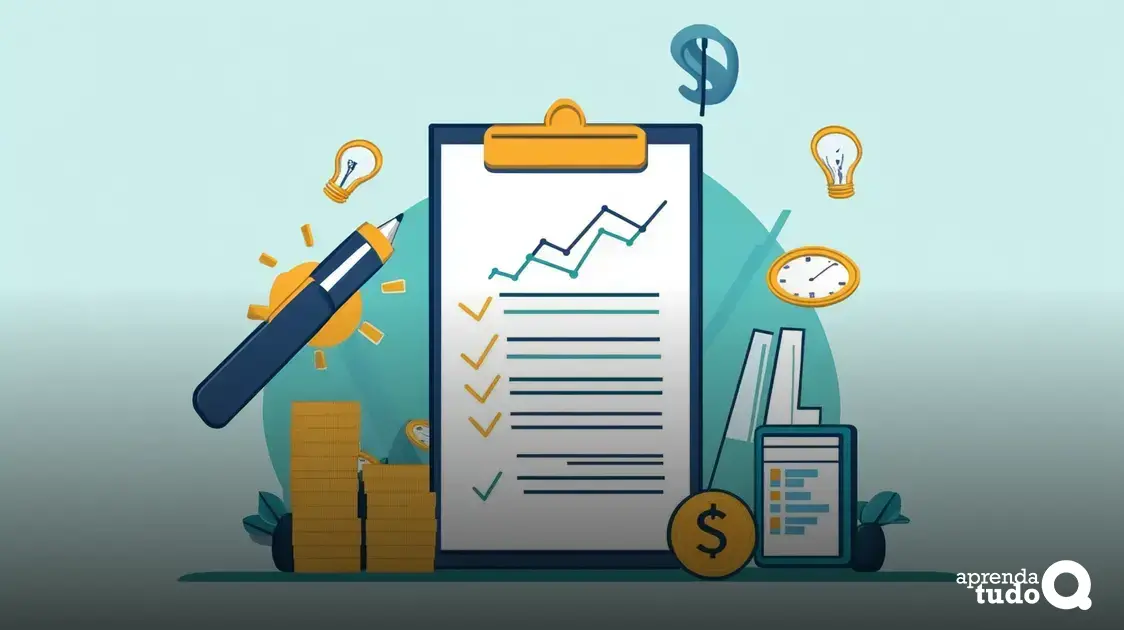Investment funds are professionally managed portfolios that pool money from multiple investors to promote financial growth.
They offer benefits like diversification and professional management but also come with risks such as market volatility and management fees.
Understanding and comparing funds can enhance your investment strategy and outcomes.
Investing can seem daunting, but with the right information on best investment funds, achieving your financial goals becomes easier.
Let’s explore how you can make informed decisions to maximise your investment potential.
What are the Best Investment Funds?
Understanding best investment funds is key to building a successful financial portfolio. These funds are professionally managed collections of stocks, bonds, or other securities.
They offer diversity, which can help reduce risk. Investors buy shares in the fund, hoping for capital appreciation and income through dividends or interest.
Types of Best Investment Funds
There are several types of investment funds available:
- Mutual Funds: These funds pool money from many investors to purchase a wide range of securities. They are actively managed by professionals.
- Exchange-Traded Funds (ETFs): ETFs are similar to mutual funds but trade on stock exchanges like individual stocks. They offer lower fees and more trading flexibility.
- Index Funds: Index funds track a specific market index, like the JSE Top 40. They have lower fees due to their passive management style.
- Hedge Funds: These funds use various strategies to achieve high returns. They often require a high minimum investment and may involve higher risks.
Why Select the Best Investment Funds?
Choosing the right investment funds can greatly impact your financial growth.
The best investment funds typically have a track record of strong performance, low fees, and a good management team.
Researching their past returns and risk profiles can help you make informed decisions.
It is also important to consider your investment goals, time horizon, and risk tolerance when selecting funds.
By aligning your choices with your financial objectives, you can optimise your investment strategy and work towards achieving your financial ambitions.
Top 5 Investment Funds for Beginners
If you are new to investing, finding the right fund is essential. Here are the top 5 investment funds for beginners that can help you start your investment journey.
1. Vanguard 500 Index Fund
This index fund tracks the performance of the S&P 500. It offers broad market exposure with low fees, making it ideal for beginners.
2. Fidelity ZERO Total Market Index Fund
This fund has no expense ratio, allowing you to invest without fees eating into your returns. It offers a diverse range of U.S. stocks.
3. T. Rowe Price Blue Chip Growth Fund
This actively managed fund focuses on established companies with strong growth potential. It’s a good choice for beginners looking for growth.
4. Schwab U.S. Broad Market ETF
This ETF offers exposure to the entire U.S. market. With low expense ratios, it’s a perfect choice for those who prefer ETFs over mutual funds.
5. iShares Core MSCI Emerging Markets ETF
This fund provides exposure to emerging markets, giving you opportunities for growth. It’s a smart addition to diversify your investment portfolio.
Choosing from these top investment funds allows beginners to build a solid foundation. Always consider your financial goals and risk tolerance when selecting funds.
How to Choose the Best Investment Funds

Choosing the best investment funds is crucial for your financial success. Here are some steps to guide you through the selection process.
1. Determine Your Investment Goals
Start by identifying your financial objectives. Are you looking for long-term growth, income, or a balanced approach? Your goals will direct your fund choice.
2. Understand Your Risk Tolerance
Every investor has a different level of comfort with risk. Assess how much risk you are willing to take based on your financial situation and investment time horizon.
3. Research Different Funds
Dive into the specifics of various funds. Look at their past performance, fees, and investment strategies. Fund ratings can also provide insights into their quality.
4. Consider Fund Costs
Pay attention to fees associated with the funds. High fees can eat into your returns. Look for funds with low expense ratios, especially index funds and ETFs.
5. Review the Fund Manager’s Track Record
The experience and performance of the fund manager are important. Check their history in managing similar funds. Successful managers typically have a proven strategy that works.
6. Diversification
Ensure that the funds you choose offer a diverse portfolio. Diversification helps reduce risk by spreading investments across different asset classes.
7. Periodically Review Your Portfolio
Once you have selected your funds, regularly review your portfolio. Reassess your goals and market conditions to make adjustments as needed.
Benefits of Investing in Funds
Investing in funds offers numerous advantages for both new and seasoned investors. Here are some key benefits of investing in funds.
Diversification
Funds allow you to spread your investments across various assets, reducing the risk of losing money if one investment performs poorly. This diversification is a simple way to balance your portfolio.
Professional Management
When you invest in funds, your money is managed by experienced professionals. These experts research and select investments, which can lead to better decisions and performance.
Accessibility
Most funds have low minimum investment amounts, making it easy for beginners to start investing. You can enter the market without needing large sums of money.
Liquidity
Many funds offer high liquidity, allowing you to buy and sell shares easily. This means you can quickly access your money when you need it.
Cost Efficiency
Investment funds often have lower fees compared to buying individual securities. This is especially true for index funds and ETFs, which typically charge lower expense ratios.
Regulatory Protections
Funds are regulated by financial authorities, which adds a layer of protection for investors. These regulations help ensure that fund management follows best practices and enhances transparency.
Potential for Higher Returns
By investing in funds, you have the potential for returns that can exceed inflation and grow your wealth over time. Many funds focus on growth-oriented investments that can provide significant long-term gains.
Risks Associated with Investment Funds
While investing in funds can provide many benefits, it is important to be aware of the risks associated with investment funds. Here are some key risks to consider:
1. Market Risk
The value of investment funds can fluctuate due to changes in the market. If the market declines, the value of the fund may also decrease, which can lead to losses.
2. Management Risk
Funds are managed by professionals, and their decisions can significantly affect performance. Poor management choices can result in lower returns or losses.
3. Costs and Fees
Even though funds can be cost-effective, high fees can eat into your returns. Be aware of expense ratios, management fees, and other costs that may apply.
4. Liquidity Risk
Some funds may have restrictions on when you can buy or sell shares. If you need your money quickly, you may face challenges if the fund does not provide instant liquidity.
5. Credit Risk
If a fund invests in bonds or other debt instruments, there is a risk that the issuer may default. This could lead to losses for the fund and its investors.
6. Concentration Risk
Funds that focus on a specific sector, industry, or geographical region may be more vulnerable to market downturns. A lack of diversification in such funds can be risky.
7. Regulatory Risk
Changes in laws and regulations can impact how funds operate. New regulations may alter the fees or guidelines for certain investment strategies.
Strategies for Maximising Returns

To achieve higher earnings from your investments, implementing effective strategies is crucial. Here are some strategies for maximising returns when investing in funds.
1. Diversify Your Portfolio
Diversification is key to reducing risk while maximising returns. Spread your investments across different asset classes, such as stocks, bonds, and alternative investments. This approach helps balance your risk and rewards.
2. Invest for the Long Term
Long-term investing generally yields better returns. Avoid the temptation to react to short-term market fluctuations. Staying invested allows you to benefit from market growth over time.
3. Regular Contributions
Make consistent contributions to your investment funds. This strategy, known as dollar-cost averaging, helps you buy more shares when prices are low and fewer shares when prices are high, reducing overall costs.
4. Rebalance Your Portfolio
Rebalancing helps maintain your desired asset allocation. Periodically reviewing your investments ensures that you are not overly exposed to any asset class, maximising your potential returns.
5. Focus on Low-Cost Funds
Select funds with low expense ratios. High costs can significantly reduce your returns over time. Index funds and ETFs often have lower fees compared to actively managed funds.
6. Take Advantage of Tax-Advantaged Accounts
Utilise tax-advantaged investment accounts, such as retirement accounts. Investments in these accounts grow tax-free or tax-deferred, enhancing your overall returns.
7. Keep Learning and Stay Informed
Stay updated on market trends, economic news, and investment strategies. Continuous learning can help you make informed decisions and optimise your investment approach.
Comparing Investment Funds: A Guide
When it comes to comparing investment funds, several factors should be considered to help you make an informed decision. Here’s a guide to assist you.
1. Fund Type
First, identify the type of fund you are comparing. Are they mutual funds, ETFs, or index funds? Each type has different management styles, fees, and tax implications.
2. Performance History
Review the historical performance of each fund. Look at their returns over various time frames, such as 1, 5, and 10 years. However, remember that past performance does not guarantee future results.
3. Costs and Fees
Examine the expense ratio and any additional fees associated with the funds. Lower costs can lead to better long-term returns, so be cautious of funds with high management fees.
4. Risk Profile
Understand the risk associated with each fund. Consider volatility, standard deviation, and how the fund behaves in different market conditions. Higher returns often come with higher risks.
5. Manager Reputation
Research the fund manager’s experience and track record. A knowledgeable and reputable manager can significantly impact fund performance.
6. Fund Size
Consider the size of the fund. Larger funds may benefit from economies of scale, but they can also be less flexible in making investment decisions compared to smaller funds.
7. Tax Efficiency
Pay attention to how funds distribute capital gains and dividends. Funds with higher tax efficiency can help you keep more of your returns.
8. Investment Strategy
Evaluate the investment strategy of each fund. Are they active or passive investors? Understanding the strategy can help you assess the expected performance and associated risks.
FAQ – Frequently Asked Questions about Investment Funds
What are investment funds?
Investment funds are professionally managed collections of assets, like stocks or bonds, that pool money from many investors to achieve financial growth.
How do I choose the best investment funds?
To choose the best funds, consider your investment goals, risk tolerance, fund performance, management fees, and the fund manager’s reputation.
What are the benefits of investing in funds?
Investing in funds offers diversification, professional management, accessibility, liquidity, cost efficiency, and the potential for higher returns.
What risks are associated with investment funds?
Risks include market risk, management risk, costs and fees, liquidity risk, credit risk, concentration risk, and regulatory risk.
How can I maximise my returns from investment funds?
You can maximise returns by diversifying your portfolio, investing for the long term, making regular contributions, and focusing on low-cost funds.
What should I look for when comparing investment funds?
When comparing funds, consider the fund type, performance history, costs, risk profile, manager reputation, fund size, tax efficiency, and investment strategy.






